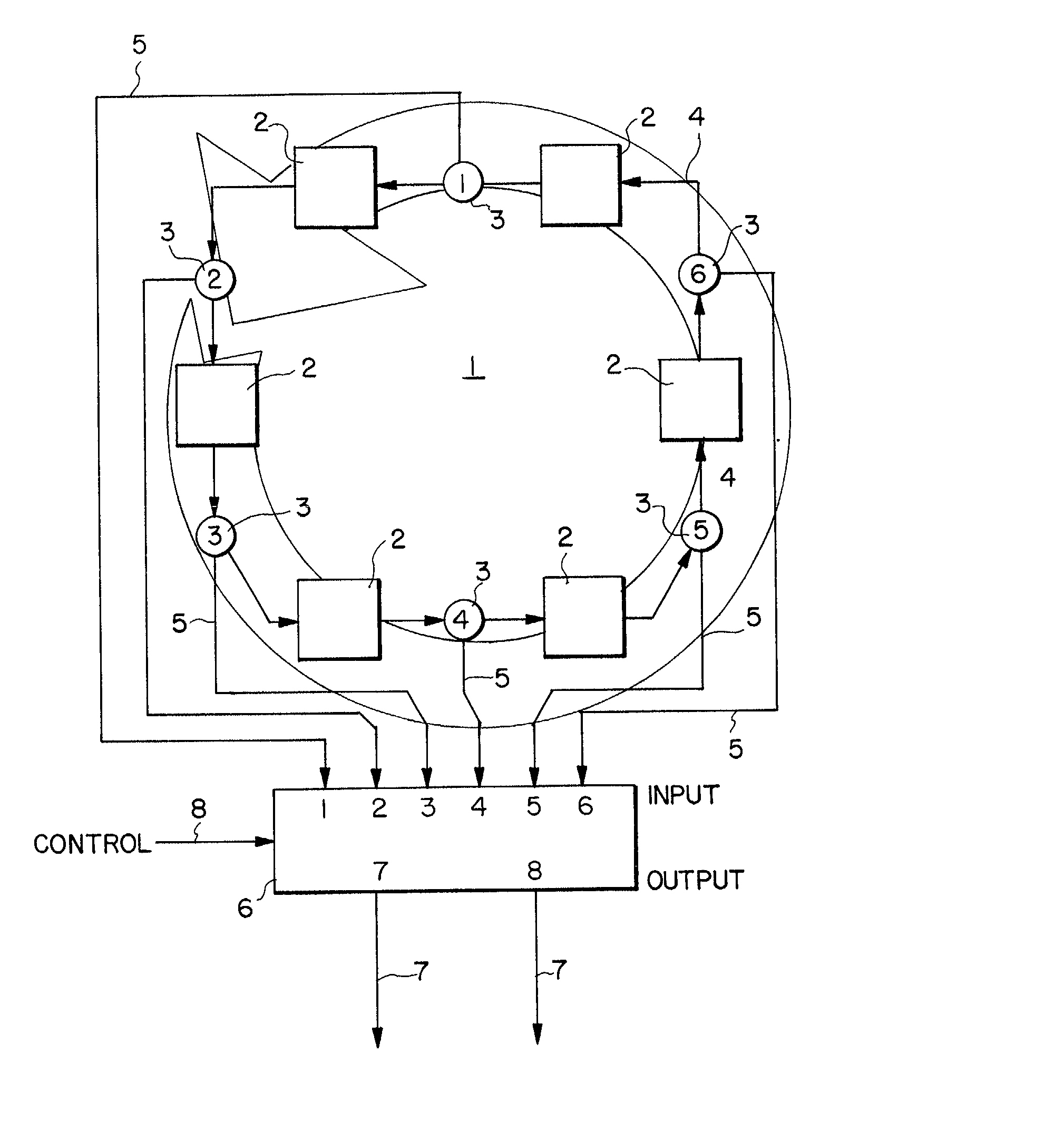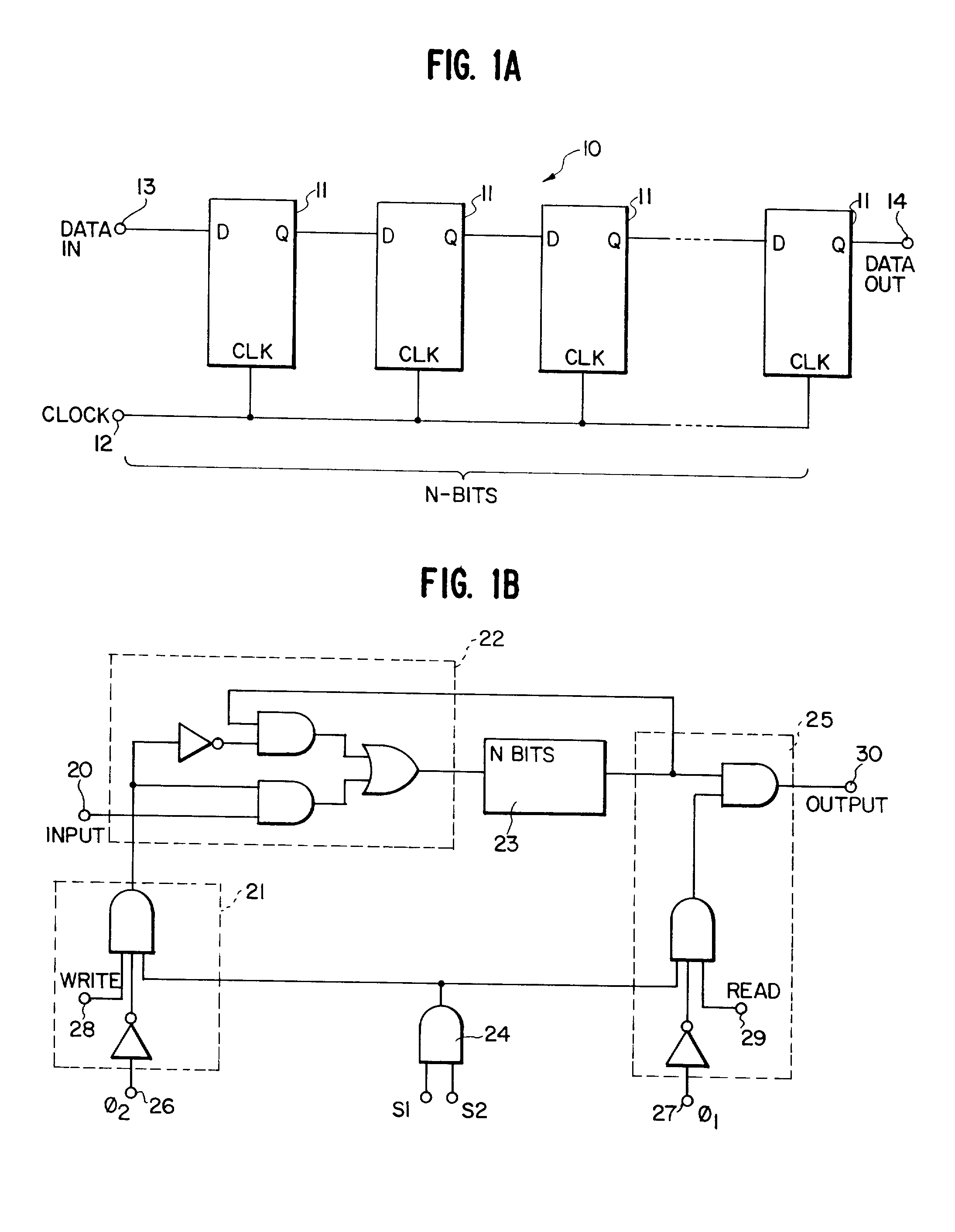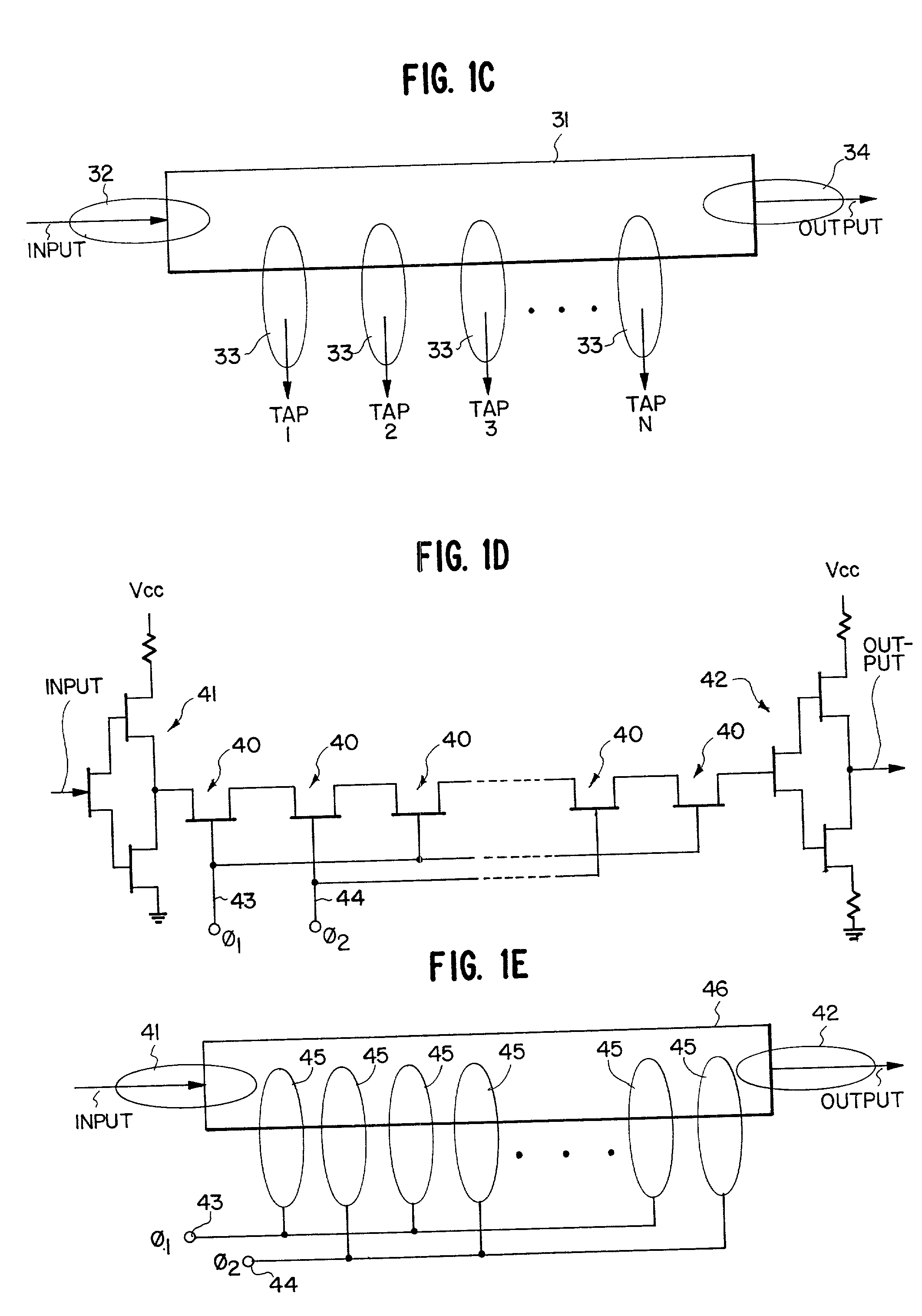Memory device having a systematic arrangement of logical data locations and having plural data portals
a data portal and memory device technology, applied in the field of memory devices and methods of storing and accessing data, can solve problems such as cumbersome scheduling, addressing and routing schemes, and achieve the effect of minimal contention between users and great flexibility
- Summary
- Abstract
- Description
- Claims
- Application Information
AI Technical Summary
Benefits of technology
Problems solved by technology
Method used
Image
Examples
first embodiment
[0103] A. Shift Registers
[0104] The preferred manner of embodying a memory device using shift registers is shown in FIG. 8A. FIG. 8A shows a long series of clocked shift registers 151 connected to form a ring 150. The ring 150 is constructed such that an entire title is capable of being stored on the ring. Typically, to store a two-hour movie, using MPEG2 as a data compression method, the ring should be able to store approximately 180 Gbits. The ring 150 is clocked by a clock source 152 which governs the rate of circulation of the data around the ring. The ring 150 is preferably clocked at such a rate to deliver (i.e., output) the title at a rate required by the receiver.
[0105] If the clock rate required cannot be attained by one shift register, many registers in parallel can be used to obtain the rate required. FIG. 8B illustrates one possible such embodiment in which two parallel rings are constructed, each comprising clocked shift registers 151 connected in series. FIG. 8C illus...
second embodiment
[0117] B. Charge Coupled Devices
[0118] A further, preferred alternative for embodying the memory device is to employ CCDs 171 (Charge-Coupled Devices) as the registers 151, as shown in FIG. 9, to form a ring memory device 170. If the ring 170 is constructed using CCDs 171, then each CCD 171 must be pumped by a clock source 172. Further, some form of regenerating means 176 must be coupled between each CCD 171. Possibilities for the regenerating means 176 include logic gates, as above. The individual CCDs simply function as registers in this embodiment, and the ring memory device 170, overall, functions similarly to the ring memory device 150 described with reference to FIG. 8.
third embodiment
[0119] C. Delay Lines
[0120] A further implementation of a ring memory device, using delay lines 181 as the storage devices, is shown in FIG. 10. Access gates 182 connect the individual delay lines 181 together. Preferably, the access gates 182 provide data ingress lines 183, data egress lines 184 and access control lines 185. The delay lines 181 themselves are preferably provided with egress ports 186 in addition to those provided at the access gates. In operation, signals transmitted over the access control lines 185 activate the ingress lines 183 or the egress lines 184, thereby allowing data to be input to or output from the ring memory device 180, respectively. If it is desired to output the title via one or more of the additional egress ports 186, appropriate gates at ends of the egress ports 186 are controlled accordingly. Otherwise, operation is analogous to that described with respect to FIG. 8.
PUM
 Login to View More
Login to View More Abstract
Description
Claims
Application Information
 Login to View More
Login to View More - R&D
- Intellectual Property
- Life Sciences
- Materials
- Tech Scout
- Unparalleled Data Quality
- Higher Quality Content
- 60% Fewer Hallucinations
Browse by: Latest US Patents, China's latest patents, Technical Efficacy Thesaurus, Application Domain, Technology Topic, Popular Technical Reports.
© 2025 PatSnap. All rights reserved.Legal|Privacy policy|Modern Slavery Act Transparency Statement|Sitemap|About US| Contact US: help@patsnap.com



